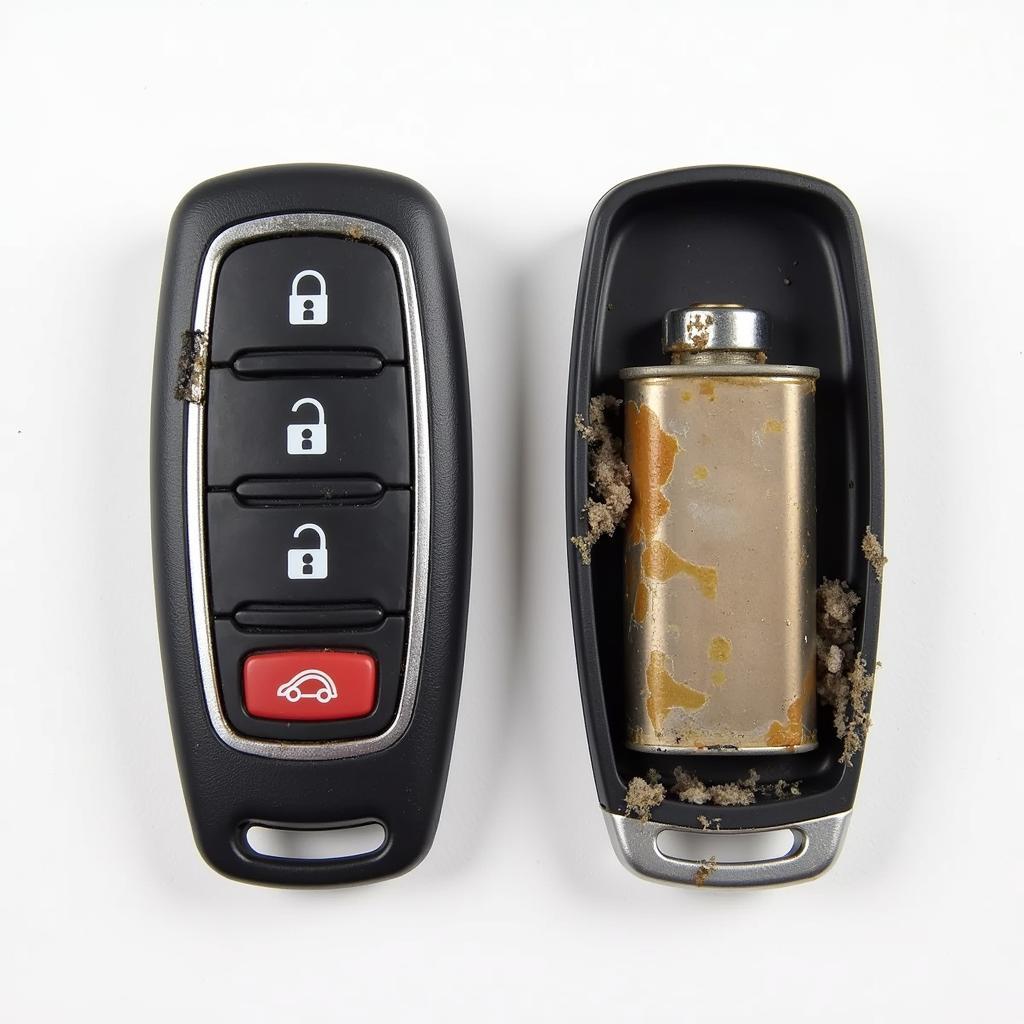A malfunctioning key fob can be incredibly frustrating, leaving you stranded or struggling to access your vehicle. Recognizing the signs of a bad key fob is the first step towards resolving the issue. This comprehensive guide will delve into the common symptoms, causes, and solutions for dealing with a faulty car key fob.
 Common Bad Key Fob Symptoms
Common Bad Key Fob Symptoms
Key fobs utilize radio frequencies to communicate with your car’s security system. Over time, various factors can disrupt this communication, leading to a range of problems. Is your car key working intermittently? Do you have to stand right next to the car for it to unlock? These are just a few of the telltale signs of a bad key fob. Sometimes the issue is as simple as a low car battery, in which case you might find our article on low battery car won t start helpful.
Understanding Key Fob Malfunctions
Key Fob Range Issues
One of the most common signs of a bad key fob is reduced range. You might notice that you need to be much closer to your vehicle than usual for the lock/unlock functions to work. This can be caused by a weakening battery, internal damage, or signal interference.
“A key fob with reduced range can indicate a dying battery, which is a simple fix. However, persistent range issues may point to more serious problems within the fob’s circuitry,” explains automotive electronics expert, David Miller, Senior Diagnostics Engineer at AutoTech Solutions.
Inconsistent Key Fob Operation
If your key fob works intermittently, unlocking your car one time and failing the next, this suggests a problem. This inconsistency can be caused by a loose connection, damaged internal components, or a dying battery. It’s similar to when your battery dead overnight, leaving you stranded in the morning.
Key Fob Buttons Unresponsive
Unresponsive buttons are a clear sign of a faulty key fob. If pressing the buttons yields no response, it could be due to a dead battery, worn-out button contacts, or damage to the key fob’s internal circuitry. Sometimes the car’s battery might be the issue, especially if you’ve noticed your car battery discharging very fast.
Troubleshooting Key Fob Problems
Check the Key Fob Battery
The first step in troubleshooting a bad key fob is to replace the battery. Key fob batteries typically last between 3-5 years. A simple battery replacement can often resolve many common key fob issues.
Inspect the Key Fob for Physical Damage
Examine your key fob for any signs of physical damage, such as cracks, broken buttons, or water damage. Physical damage can compromise the key fob’s functionality and may require repair or replacement. Just like when you have problems with jump starting a car, physical damage can be the culprit.
Reprogramming the Key Fob
In some cases, a key fob may need to be reprogrammed to function correctly. This is often necessary after a battery replacement or if the key fob has lost its synchronization with the vehicle. Some vehicles allow for DIY reprogramming, while others require professional assistance.
“Reprogramming a key fob can sometimes resolve seemingly complex issues. If you’ve tried replacing the battery and inspecting for damage, reprogramming might be the next logical step,” advises Sarah Johnson, Lead Technician at Mobile Auto Diagnostics. You should also consider whether my car wont jump because the issue may be with the car and not the keyfob itself.
Conclusion
Recognizing the signs of a bad key fob is crucial for addressing potential car access issues. By understanding the common symptoms and troubleshooting steps, you can often resolve the problem yourself. However, for persistent or complex issues, seeking professional assistance from an automotive locksmith or dealership is recommended. Don’t let a faulty key fob leave you stranded; address the issue promptly to maintain convenient and reliable access to your vehicle.

